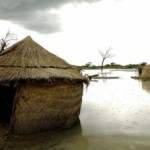Lichenometric dating studies at the Eugenie, Hooker, Mueller and Tasman glaciers in Mt. Cook National Park, South Alps, New Zealand, reveal that the Little Ice Age was maximum during the mid-18th century, around AD 1725–1740[30]. The Little Ice Age maximum during the 18th century was similar in northern Norway[31,32] and southern Norway[33–35]. Mathews and McCarroll[36], in their study in Breheimen, southern Norway found peak avalanche activity between AD 1685 and 1750; the same time as the outlet glaciers were expanding to reach their Little Ice Age maximum limits.
This suggests the possibility of a common trend in mountain areas of both hemispheres and the Himalayas. Differences of Little Ice Age maxima of four to five decades due to regional/local orientation (whether facing north, south, east or west) variations are still to be considered as synchronous. North-facing Dokriani glacier in the Garhwal Himalaya indicates Little Ice Age maximum during AD 1692[37], whereas south facing Chorabari glacier shows its maximum during AD 1748. Now since data on the retreat of Little Ice Age glaciers of the northern and southern hemispheres and the Himalayan regions are available, it may be mentioned that the climatic changes in the world started around early to mid-18th century, though further studies are need to confirm this. There is every possibility that the effect of climate change was sensed first in the equatorial zone by the north-facing Himalayan glaciers such as the Dokriani Bamak (glacier).
The Kedarnath temple and the engravings on its boundary wall confirm that there was no glacier around the temple till AD 850. Lichenometric evidences in the Chorabari glacier dated the Little Ice Age maximum to around AD 1748. After the peak of the Little Ice Age, the recession of the glacier started, followed by three major stages of its advance and retreat during AD 1766, 1827 and 1878 (retreat) respectively, as indicated by the largest lichen on the boulders of four loops of terminal and lateral moraines of the glacier. If we consider that glaciations in the region started during the mid-fourteenth century, i.e., the beginning of the Little Ice Age and continued till around AD 1748, then it can be assumed that the temple remained submerged in ice/glacier for a minimum of 400 years. This is further supported by the striations on the walls of the temple.













